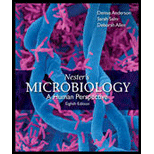
Concept explainers
Name and describe the three areas of taxonomy.
To review:
The three areas of taxonomy.
Introduction:
A group of organisms with the same properties (that is shared characteristics features and morphology) are grouped together to separate them from the ones which carry different properties. The sorting of living organisms in different groups is taxonomy and a particular group of an organism is known as a taxon (plural for which is taxa).
Therefore, taxonomy (the word taxonomy means arrangement) is the science of naming, defining and characterizingbiological organisms into hierarchical groups (taxa) based on their shared characteristics.
Explanation of Solution
In order to simplify the understanding of taxonomy, one can say that living organisms sharing same characteristics are grouped together, these groups are called taxa. Moreover, these taxa (groups) are provided with a particular rank which is called taxonomic rank. These groups of particular rank can be combined to form a higher rank, which in turn generates a taxonomic hierarchy.Therefore, one can say that taxonomy revolves around three inter-related areas of study, which is described as under-
Identification: The process of identification involves looking for basic characteristics of an organism in order to recognize it.
Classification: Once an organism is identified, the next step is to find the characters it shares with other groups and place this organism under its related group. This process of arrangement of an organism into their related group for ease of study is called classification.
Nomenclature:It can simply be defined as the naming of the organism. As a specific scientific name is assigned to an organism and that name is accepted universally, it gets easier to refer to that organism anywhere across the globe, without linguistic barriers. The scientific community follows a binomial nomenclature, in which there are two parts of the name which is written in italics. The first partof the name indicates the genus of the species, while the second part depicts the species within the genus.
There are several organisms present on this Earth, studying them becomes essential for an individual in order to know their properties. Such vast number of organisms need to be named for making the study easier, also there should be one common or universal name of an organism across the globe so that anyone can identify it without a linguistic barrier. For this purpose, the study of taxonomy was introduced which can be divided into three inter-related areas namely- identification, classification,and nomenclature.
Want to see more full solutions like this?
Chapter 10 Solutions
Nester's Microbiology: A Human Perspective
- What did the Cre-lox system used in the Kikuchi et al. 2010 heart regeneration experiment allow researchers to investigate? What was the purpose of the cmlc2 promoter? What is CreER and why was it used in this experiment? If constitutively active Cre was driven by the cmlc2 promoter, rather than an inducible CreER system, what color would you expect new cardiomyocytes in the regenerated area to be no matter what? Why?arrow_forwardWhat kind of organ size regulation is occurring when you graft multiple organs into a mouse and the graft weight stays the same?arrow_forwardWhat is the concept "calories consumed must equal calories burned" in regrads to nutrition?arrow_forward
- You intend to insert patched dominant negative DNA into the left half of the neural tube of a chick. 1) Which side of the neural tube would you put the positive electrode to ensure that the DNA ends up on the left side? 2) What would be the internal (within the embryo) control for this experiment? 3) How can you be sure that the electroporation method itself is not impacting the embryo? 4) What would you do to ensure that the electroporation is working? How can you tell?arrow_forwardDescribe a method to document the diffusion path and gradient of Sonic Hedgehog through the chicken embryo. If modifying the protein, what is one thing you have to consider in regards to maintaining the protein’s function?arrow_forwardThe following table is from Kumar et. al. Highly Selective Dopamine D3 Receptor (DR) Antagonists and Partial Agonists Based on Eticlopride and the D3R Crystal Structure: New Leads for Opioid Dependence Treatment. J. Med Chem 2016.arrow_forward
- The following figure is from Caterina et al. The capsaicin receptor: a heat activated ion channel in the pain pathway. Nature, 1997. Black boxes indicate capsaicin, white circles indicate resinferatoxin. You are a chef in a fancy new science-themed restaurant. You have a recipe that calls for 1 teaspoon of resinferatoxin, but you feel uncomfortable serving foods with "toxins" in them. How much capsaicin could you substitute instead?arrow_forwardWhat protein is necessary for packaging acetylcholine into synaptic vesicles?arrow_forward1. Match each vocabulary term to its best descriptor A. affinity B. efficacy C. inert D. mimic E. how drugs move through body F. how drugs bind Kd Bmax Agonist Antagonist Pharmacokinetics Pharmacodynamicsarrow_forward
 Concepts of BiologyBiologyISBN:9781938168116Author:Samantha Fowler, Rebecca Roush, James WisePublisher:OpenStax College
Concepts of BiologyBiologyISBN:9781938168116Author:Samantha Fowler, Rebecca Roush, James WisePublisher:OpenStax College Biology Today and Tomorrow without Physiology (Mi...BiologyISBN:9781305117396Author:Cecie Starr, Christine Evers, Lisa StarrPublisher:Cengage Learning
Biology Today and Tomorrow without Physiology (Mi...BiologyISBN:9781305117396Author:Cecie Starr, Christine Evers, Lisa StarrPublisher:Cengage Learning Biology 2eBiologyISBN:9781947172517Author:Matthew Douglas, Jung Choi, Mary Ann ClarkPublisher:OpenStaxCase Studies In Health Information ManagementBiologyISBN:9781337676908Author:SCHNERINGPublisher:Cengage
Biology 2eBiologyISBN:9781947172517Author:Matthew Douglas, Jung Choi, Mary Ann ClarkPublisher:OpenStaxCase Studies In Health Information ManagementBiologyISBN:9781337676908Author:SCHNERINGPublisher:Cengage Human Heredity: Principles and Issues (MindTap Co...BiologyISBN:9781305251052Author:Michael CummingsPublisher:Cengage Learning
Human Heredity: Principles and Issues (MindTap Co...BiologyISBN:9781305251052Author:Michael CummingsPublisher:Cengage Learning





